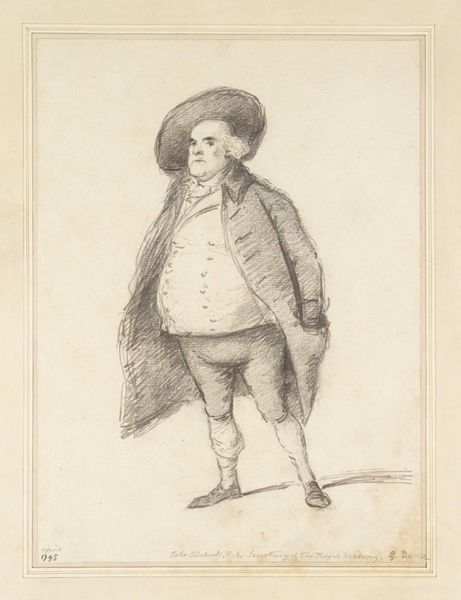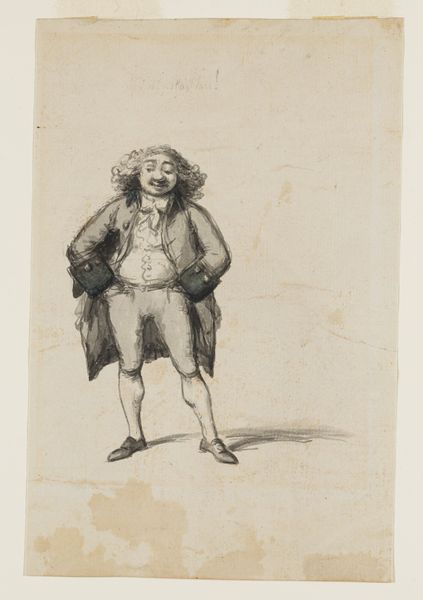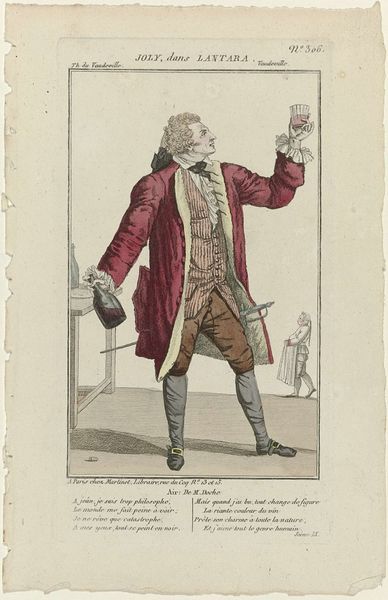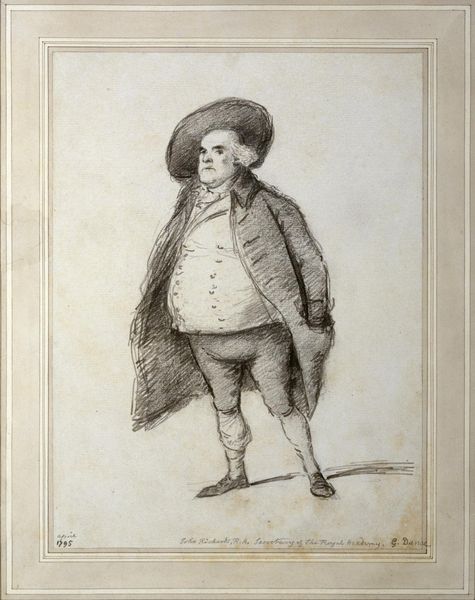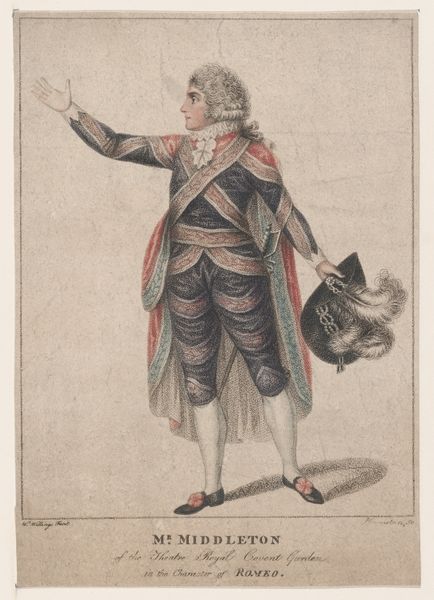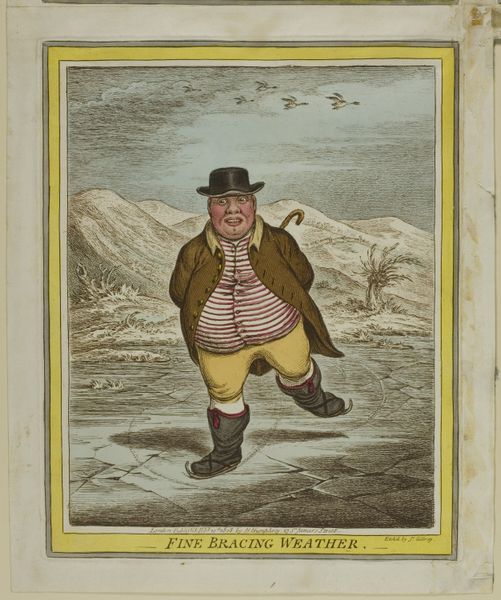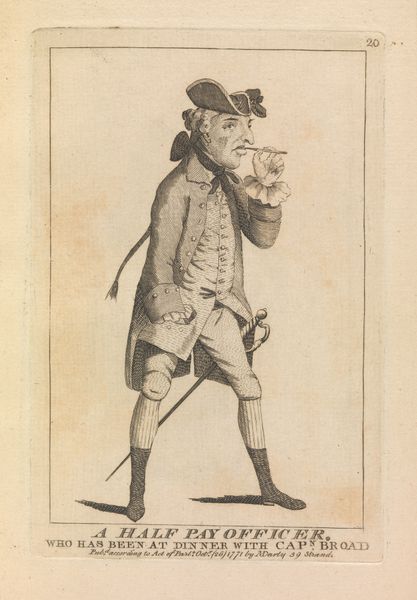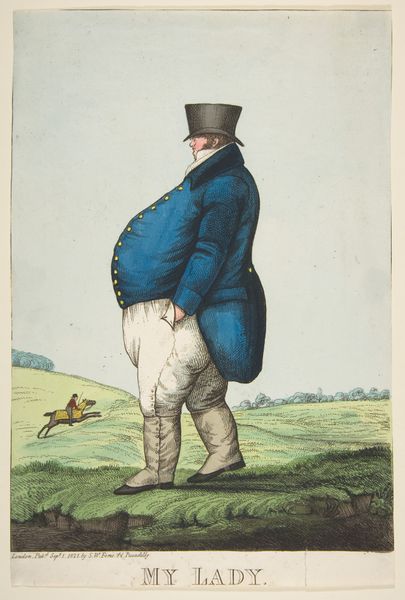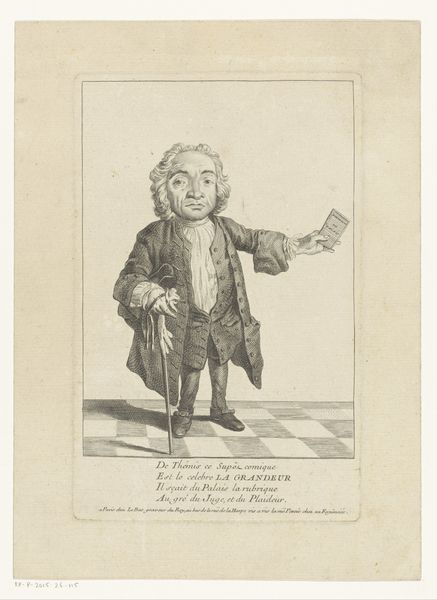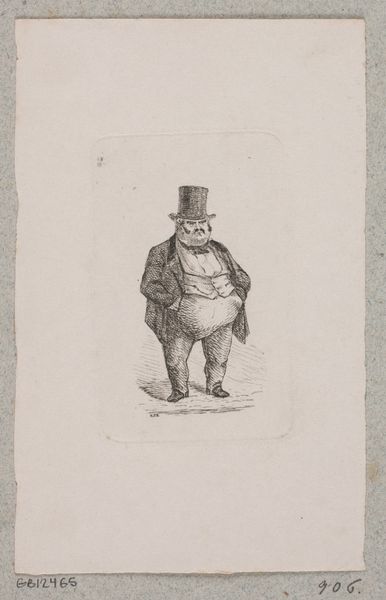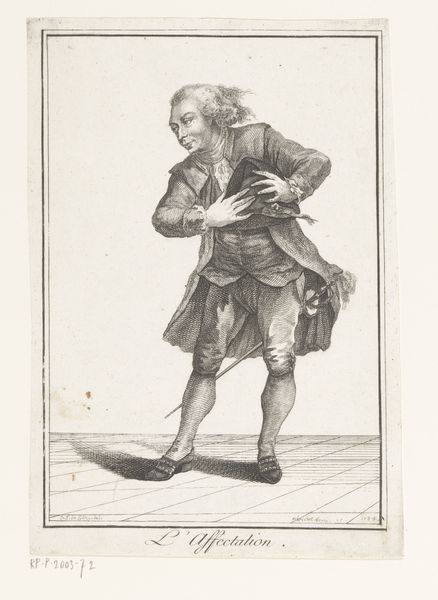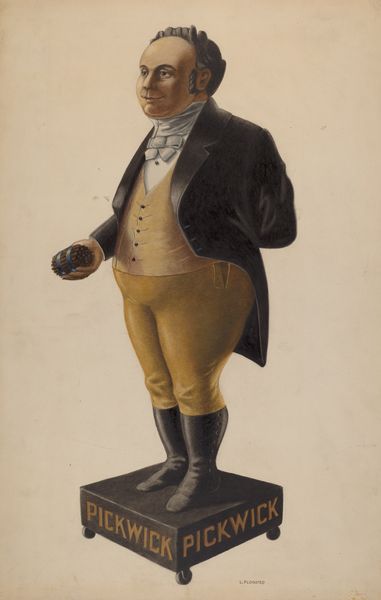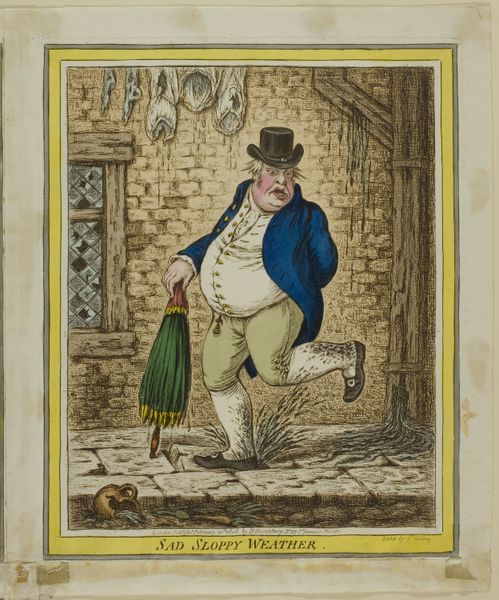
Dimensions: support: 281 x 234 mm
Copyright: CC-BY-NC-ND 4.0 DEED, Photo: Tate
Curator: This is a late 18th-century caricature of Charles James Fox, rendered by an artist from the British School. It's currently held in the Tate Collections. Editor: The figure seems to burst forth, doesn't it? There is a real energy in the composition, especially with the exaggerated pose. Curator: Indeed. Caricatures like this served a vital role in the political discourse of the time, skewering prominent figures and their policies. Fox was a frequent target. Editor: Note the deliberate distortions—the oversized body, the grimacing smile. It’s all skillfully deployed to amplify the message. Curator: Absolutely. Consider the inscription "Et praeterea nihil" - "and furthermore nothing." It's a scathing commentary on Fox's perceived emptiness or lack of substance. Editor: The lightness of the washes, the dynamism of the line… it almost feels like a fleeting, ephemeral image, perfectly suited to the transient nature of political satire. Curator: A potent blend of political critique and artistic skill. Editor: It really captures a specific moment in time.
Comments
tate 7 months ago
⋮
http://www.tate.org.uk/art/artworks/british-school-18th-century-caricature-of-charles-james-fox-t10104
Join the conversation
Join millions of artists and users on Artera today and experience the ultimate creative platform.
tate 7 months ago
⋮
This is a caricature by an unknown artist of the politician Charles James Fox. Fox was famous equally for his formidable debating powers and his dissolute lifestyle. He was one of the most caricatured figures in eighteenth-century public life. By the early 1780s he was a leading light in the Whig Party, which then stood in opposition to the Court Party. He is shown here wearing the trademark buff and blue colours of the Whigs. In his hand he waves a bill which, according to the drawing's Latin inscription, amounts to little more than empty rhetoric. Gallery label, September 2004
